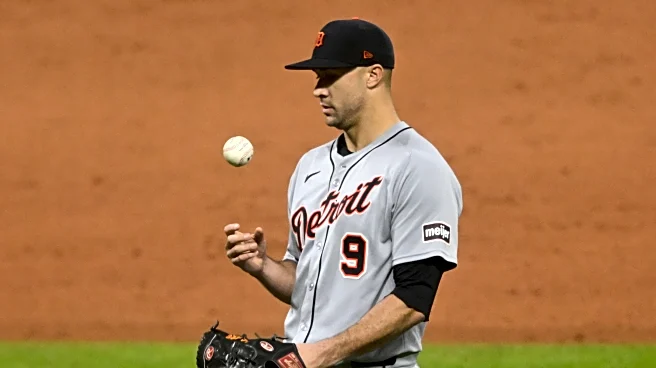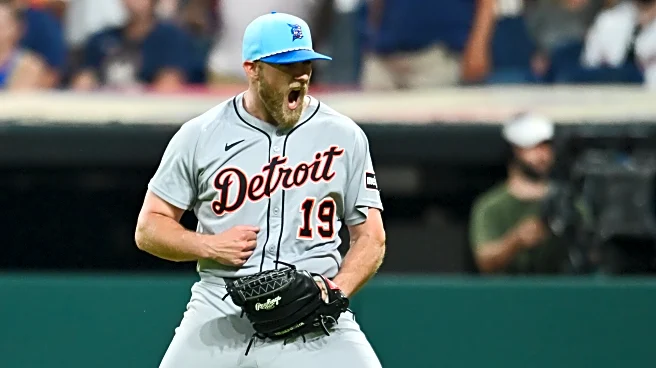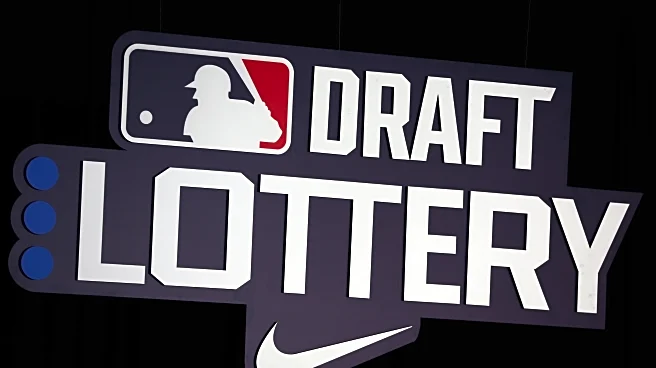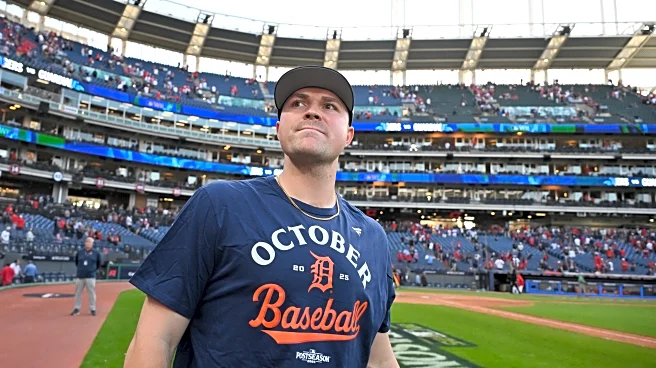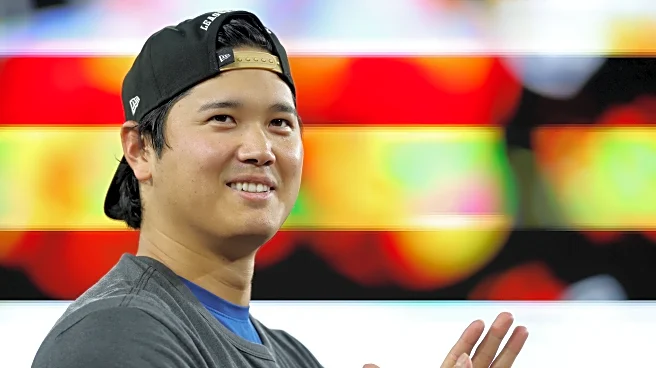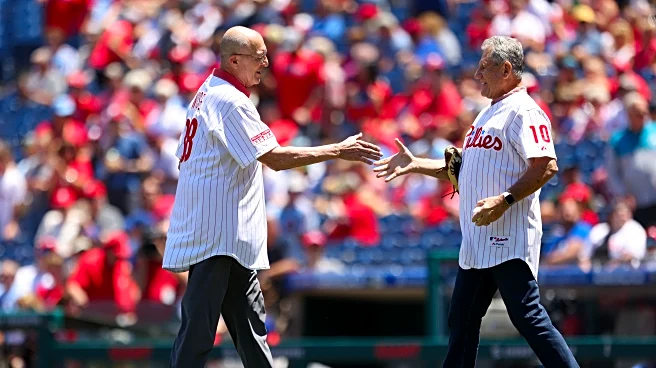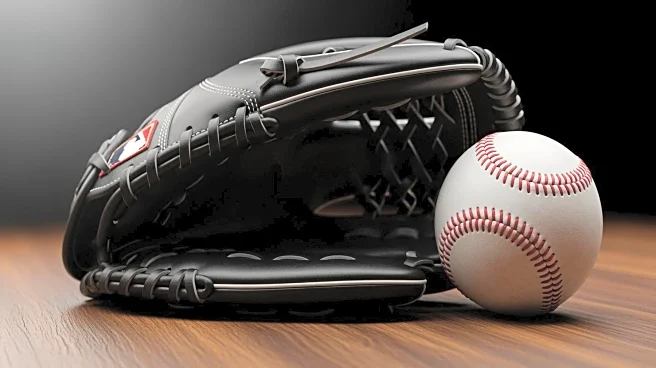With the Detroit Tigers’ season officially over at the hands of the Seattle Mariners, it’s time to take a slightly too early look at some upcoming roster situations. Our very own Patrick covered the offseason
timeline as a whole here, so I won’t be getting into too much detail there. Instead, I’ll skip straight to the roster side of things, starting with cleaning up the 40-man roster to set the stage for the real fun later.
November 18th is the deadline for Rule 5 protection of players, as well as the date to submit qualifying offers. November 21 is the date to tender contracts to arbitration eligible players.
Injured Players
As things currently stand, there are 47 players on Detroit’s 40-man roster, technically, as the seven players on the 60-day IL need to be added back (they can alternatively be immediately released). Those seven players are:
- Alex Cobb
- Beau Brieske
- Jason Foley
- Sean Guenther
- Jackson Jobe
- Ty Madden
- Reese Olson
Olson, Jobe, and Maddon are certainly coming back, Cobb is not, and the rest are a bit complicated. For now, lets simply acknowledge most of these players exist and handle them in the upcoming Free Agent and Arbitration categories, respectively. Just know that because of these injuries, at least seven players have to be removed from the roster before the offseason begins in earnest.
Free Agents and Options
The Tigers have a fairly small, low-impact free agency class departing this winter. Their emphasis on building from within means most of their critical players have several years of control left. Only two or three regular contributors are due to hit free agency, and a few others have options to discuss.
Here are the free agents:
- Alex Cobb
- Chris Paddack
- Gleyber Torres
- Kyle Finnegan
- Rafael Montero
- Tommy Kahnle
And here are those with options:
- Jack Flaherty (player option: $20M)
- Jose Urquidy (club option: $4M)
- Paul Sewald (mutual option: $10M)
Most of these players can simply go. None of Cobb, Paddack, or the relievers showed enough to merit a return to Detroit. Torres and Finnegan are the only two players Detroit could want back from the unrestricted Free Agent pool after two overall solid, but uneven, seasons. Torres started hot but struggled through a hernia in the second half, while Finnegan was lights-out immediately after the trade deadline before a groin injury knocked him off course.
Torres is probably a fringe candidate for a Qualifying Offer, which is set at $22.05M for 2026 and would yield Detroit a draft pick were he to sign elsewhere, but chances are he would simply accept to rebuild a bit more value on a nice payday. That wouldn’t be the worst scenario, but with a lot of righty infielders coming up who can’t handle shortstop, there might be a wiser use of funds depending on what the Tigers are willing to spend this offseason. Likewise, Finnegan would improve the 2026 bullpen, but probably isn’t irreplaceable if his asking price gets a little rich.
On the options side, things are mostly straightforward. Supposedly, Urquidy was already released and re-signed to a minor league contract, removing him from the 40-man roster. Additionally, I have never seen a mutual option picked up in baseball and I don’t expect Sewald to be the first; Detroit almost certainly pays his $1M buyout and moves on.
Flaherty is the only interesting situation amongst those with options. After a healthy, but uninspiring, 2025, his option went from a sure-to-be-declined $10M to a $20M option worth considering because he made the requisite number of starts to trigger the higher price. I would expect that after two years of good health and a strong finish to 2025, including a very solid playoff performance, Flaherty opts out, but it’s hardly a guarantee. If he does, I would personally offer him a Qualifying Offer, as $22M for a mid-rotation starter the organization likes and knows is a pretty fair rate. Like Torres, he could decline and seek that multi-year deal elsewhere, or he could play for a third straight pillow contract. Either way, Detroit would be in a pretty decent position.
All told, the free agents clear 8 or 9 players, depending on Flaherty’s option, from the 40-man roster. Re-signing any of them could add them back, of course, but as things stand, those 8 will all be removed from the roster to open space for prospects and other signings.
Arbitration Class
Unsurprisingly, Detroit has a very large arbitration and pre-arbitration class. The headliners obviously won’t be non-tendered, so we’ll skip players like Tarik Skubal for now, but there are some decisions to be made deeper down the roster. Here’s the list of arbitration and then pre-arb players (who all earn the minor league minimum), who stand as potential non-tender candidates:
- Jason Foley (3.150): $3.15M
- Alex Lange (3.145): $900K
- Andy Ibanez (3.133): $1.8M
- Beau Brieske (3.056): $1.3M
- Drew Sommers
- Chase Lee
- Tyler Mattison
- Dylan Smith
- Sean Guenther
Odds are that most of these players will be tendered. Ibanez has seemingly outgrown his time with the team, having struggled for most 0f 2025. His role was filled by a variety of cheaper and more productive players, and as noted earlier, the Tigers have right-handed hitting infielders like Hao-Yu Lee and Max Anderson they would probably rather deploy in 2026 as opposed to bringing back Ibáñez for his age 33 season.
A few of the pitchers stand out for injury-riddled 2025 seasons. Foley in particular is in the unfortunate situation of being hurt and expensive simultaneously. Ultimately, though, most of these are simply health decisions. If any of these arms are healthy, you can justify tendering them, but if not, there’s no reason to keep them around on anything more than a rehabbing minor-league contract. Lange and Brieske aren’t expensive, but the Tigers non-tendering them and trying to sign them back on minor league deals seems somewhat likely.
The pre-arbitration players are a lot cheaper and have significantly more club control; most will return. A few could be non-tendered and then re-signed to a minor league contract to save a 40 man spot, but predicting that from here is nigh impossible. The soon-to-be 30-year-old Guenther seems like the simplest non-tender. The Tigers really need an upgrade to the southpaw side of the pen. Dylan Smith looked interesting before injuries spoiled his season. Mattison just hasn’t made progress since returning from Tommy John surgery, but he does have interesting stuff. Sommers and Lee both have elements to their game that recommend them, but neither profiles as a big impact player so it just comes down to how much more the Tigers think they can squeeze out of them at the major league level.
In total, expect another 2 to 3 players to be nontendered from this list, likely Ibanez and 1 or 2 pitchers dealing with injuries worse than previously expected. That would result in at least 10 total spaces on the 40-man roster and leave plenty of room for future additions such as prospects, free agents, and trade acquisitions.
Rule V Preparations
One of the consequences of “building from within” is that large groups of prospects become Rule V eligible together. Simultaneously, roster spots get progressively harder to justify spending on prospects, especially those who won’t contribute to next year’s team. That being said, Scott Harris will still have to protect several of the higher-ranked prospects in the system and pick and choose a few others who seem most likely to be poached by a non-contender. The full list of Rule-V eligible prospects is extensive and full of several players no team would even consider. For now, here’s a curated list of prospects worth keeping an eye on:
- Thayron Liranzo
- Eduardo Valencia
- Hao-Yu Lee
- Gage Workman
- Trei Cruz
- Jake Miller
- RJ Petit
Detroit won’t be able to protect all of these players – or, if they did, they’d have at most 4 roster spots to add to the major league roster! – but several of them will be. Liranzo and Lee are absolute locks. A few of the others present interesting decisions, especially upper level pitchers like Lee or Miller. I’d guess at most five of these players get protected. There just isn’t enough room to add to the major league roster while protecting hoards of fringe prospects.
Jake Miller as a left-handed starter with a quality breaking ball and changeup, seems the closest to a lock. He dealt with injuries much of this season, a familiar refrain, but he has advanced enough command that a team could certainly try to use him as a Rule 5 pick. Still, he doesn’t have the type of upside that teams like to hunt for in the Rule 5.
Trei Cruz is an interesting utilityman who can play all over the field, including center field and shortstop. He controls the strike zone and takes his walks, but the power and speed tools are too light to really expect much more out of now that he’s 27 years old. Zach McKinstry remains the better option, but Cruz’s switch-hitting versatility could convince another team to pick him up. He’s more likely to stay than Workman, though the latter’s upside remains more enticing. Probably the Tigers are comfortable letting them both go, particularly with a rejuvenated Javy Báez at shortstop and Kevin McGonigle just about big league ready. McGonigle may not be a long-term option as a starting shortstop defensively, and is more likely a second or third baseman long-term, but he’s good enough to provide insurance at the position that the Tigers didn’t have last year.
Finally, Eduardo Valencia isn’t really a major league option behind the plate except on a very limited basis, but he broke out nicely in 2025 at the Double and Triple-A levels, hitting a combined 24 home runs while upping his walk rate a little. He has some injury history to explain his slow development prior to this, his age 25 season. There are enough options to clear space that the Tigers could keep Valencia as a right-handed power bat for depth, but the fact that he’s really best suited for first base doesn’t bode well for his chances of staying on the roster. He might be a player they can actually trade for a different minor league depth piece that suits the team’s needs better.
As the Tigers’ offseason begins, Harris has a fairly typical roster to manage. With only a few meaningful free agents and non-tender candidates, there should be a lot of continuity from this year’s team to the next. Making the right decisions to protect the Rule V eligible prospects is probably the hardest task coming up in the immediate future. From there, he’ll be responsible for supplementing a solid, but flawed, core of players through free agency and trades. We’ll start previewing some of those decisions coming up soon.
